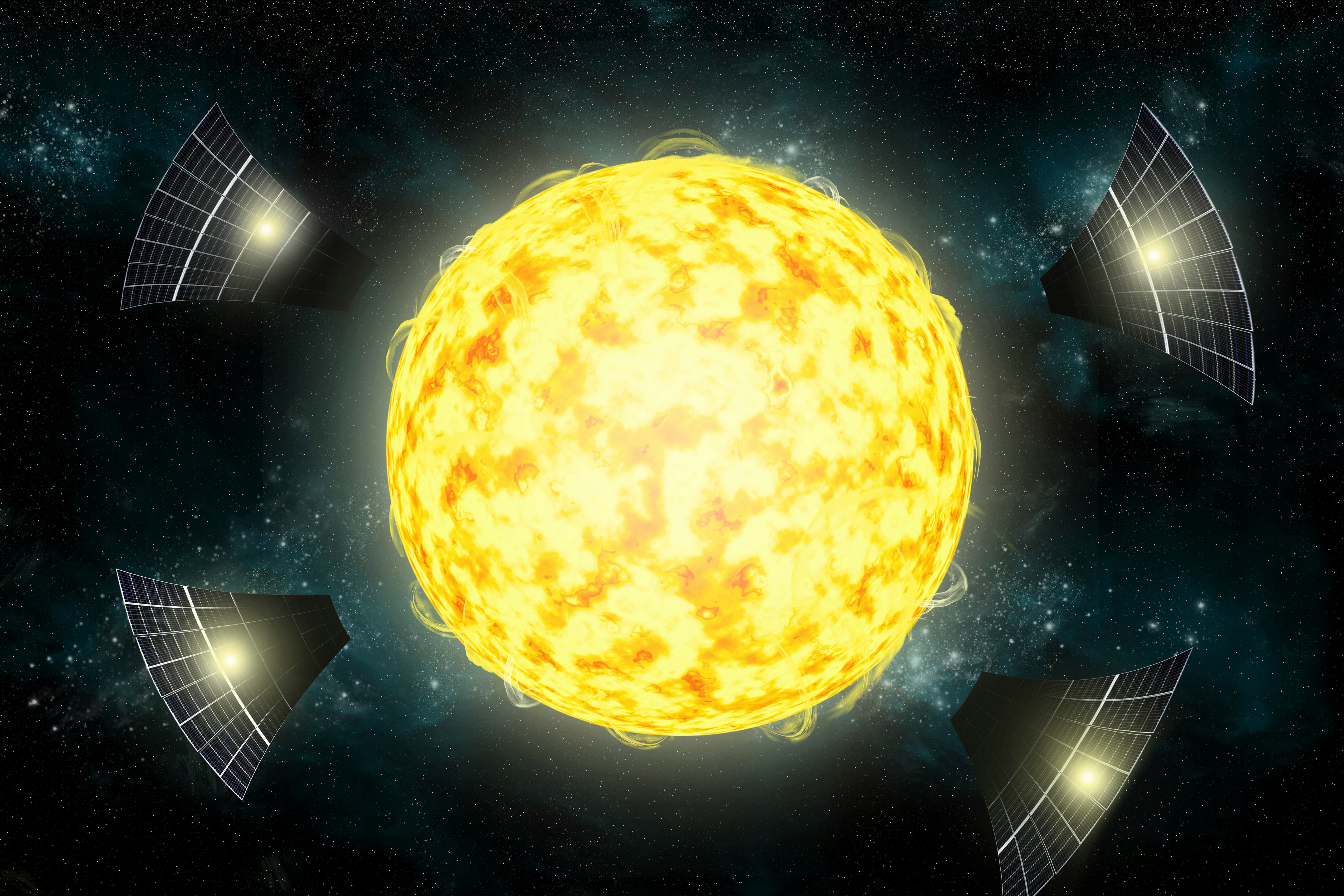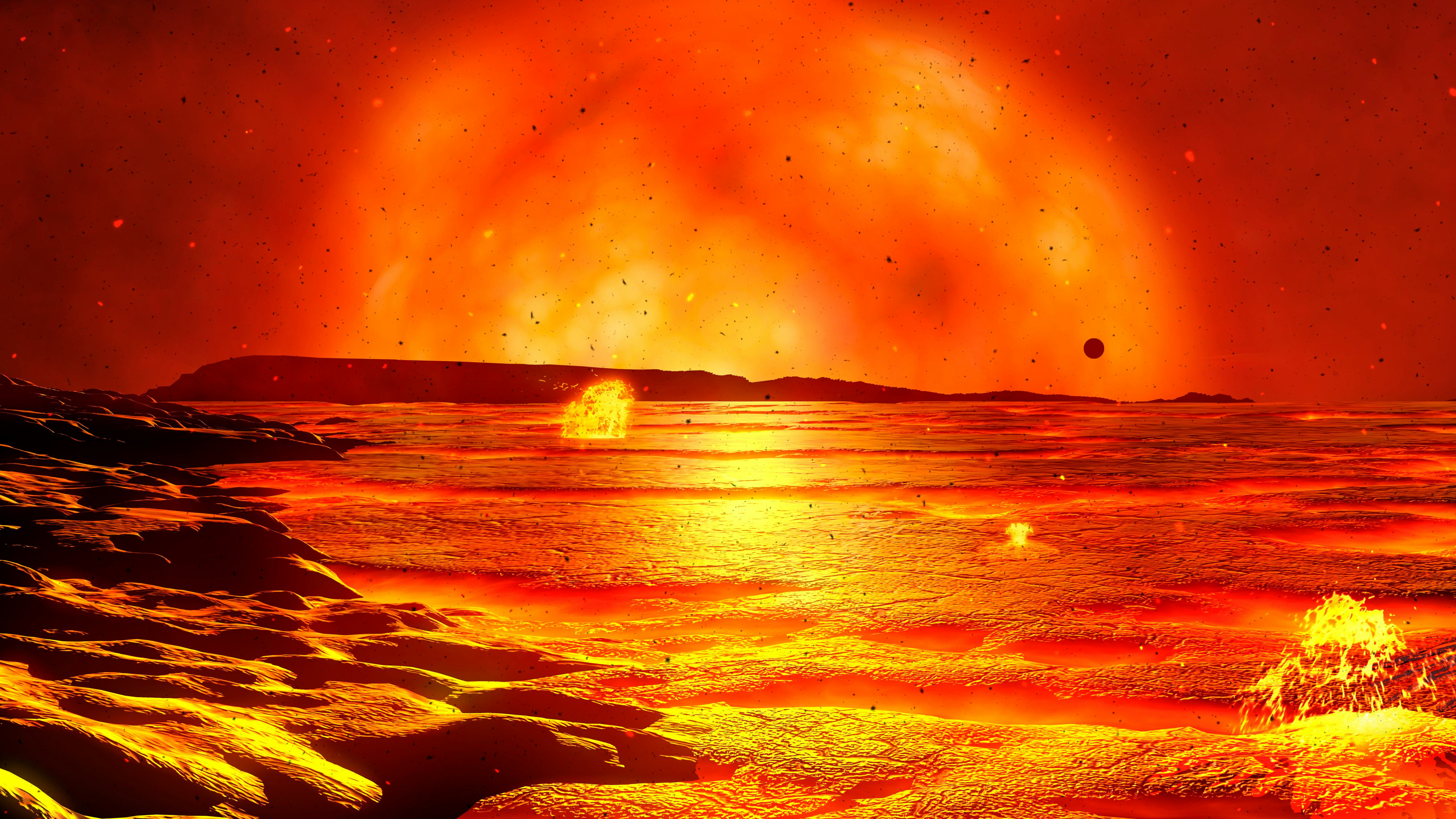
Alien civilizations might re-engineer their stars to give their planets a longer lifespan.
Researchers involved in the search for extraterrestrial intelligence, or SETI, have suggested many times that technologically-advanced aliens might build structures we can see from Earth, such as Dyson swarms: objects surrounding a star to capture as much of its energy as possible. A few other SETI researchers have suggested that instead of just trying to harvest solar energy from their host star, really ambitious alien civilizations could, in theory, actually blow material away from the star to make it live longer. And that effort to buy civilization another few billion years of survival might also be visible to astronomers here on Earth.
Columbia University astrophysicist Matthew Scoggins and astronomer David Kipping published their work in the Monthly Notices of the Royal Astronomical Society.

This is How to Keep a Star from Burning Out
Our Sun is going to die someday, and it will take the entire inner Solar System with it. If there’s still life on Earth in 5 billion years, its time will have run out. But what if that future life is a technologically advanced civilization that can pool its resources and actually stop the Sun from expanding? That sounds like a science fiction plot, but science fiction and actual science sometimes run very close together, especially when SETI researchers are trying to work out what evidence of a distant alien culture might look like.
Stars like our Sun spend most of their lives as gargantuan thermonuclear reactors, fusing hydrogen atoms into helium atoms deep in their cores. That reaction releases tremendous amounts of energy, which pushes against the star’s tremendous weight, keeping the whole thing from collapsing. But when the hydrogen runs out, so does the clock on life in the Solar System.
Over the years, several researchers have suggested that an extremely advanced civilization could find ways to pull huge amounts of mass away from its host star. Removing enough mass would reduce the pressure and temperature in the star’s core. That, in turn, would slow down nuclear fusion, which means the star’s hydrogen fuel would last longer.
But how exactly would hypothetical aliens siphon enough superhot gas away from a star to make a difference? Nobody’s drawn up a blueprint yet, of course, but one 2017 study suggested that aliens could use a big laser to boost the power of a star’s stellar winds, which would make the star shed mass faster than it normally would (just don’t go too far and end up with Starkiller Base). Others have suggested rerouting large asteroids to swoop past the star and lure away streamers of starstuff in their wake.
Scoggins suggests a few other options.
“You could use some sort of 'stellar excavator', which might take the form of a compact object that does close fly-bys with the star and siphons off a small amount of mass. Or you might have some sort of reflective swarm around the star, something like a Dyson sphere, which reflects some of the star's radiation back to the surface and increases the stellar wind,” Scoggins tells Inverse. “I'm sure there are other mechanisms that we haven't thought of.”

Saving the World Is a Generations-Long Process
To save their planet — or at least buy it an extra couple of billion years — alien engineers would need to lift about 3 times the mass of Ceres every century. But they’d need to keep it up for thousands of years, and they’d only know it worked when something very slow and subtle eventually didn’t happen. As a star burns up its hydrogen fuel, it should start to get brighter, but star-lifting should keep that from happening.
“Because this natural increase in luminosity is very slow towards the beginning of a star's life, it would take a while for an engineering civilization to notice its absence,” says Scoggins.
It’s hard to imagine a society sticking with a project for thousands of years, even with their survival on the line; 21st-century humanity can’t even seem to organize a response to our self-inflicted climate crisis. Scoggins is optimistic, though.
“Humanity has changed dramatically in the last few thousand years, with most of that change happening in the last few hundred years. When we're imaging civilizations thousands or millions of years more advanced than us, it doesn't seem that far-fetched,” Scoggins says. “Technological considerations aside, we have to speculate. Maybe I'm an optimist, but I really hope that civilizations aren't doomed to destroy themselves.”
It Always Comes Back to Looking for Dyson Swarms
In their recent paper, Scoggins and Kipping decided to leave the details to the hypothetical aliens; they were more interested in calculating how much time such an ambitious civilization could buy itself and how we might spot their work from afar.
Regular dips in the light coming from a star could be the shadow of mass-lifting asteroids, scoops, or giant mirrors passing in front of the star — or even lifted mass, orbiting the star in clouds of gas and dust.
“A Dyson swarm which would cause periodic dimming of the star, similar to what was observed with Boyajian's Star,” says Scoggins. In that case, the biggest challenge will be telling a Dyson swarm apart from naturally-occurring clouds of dust, like the ones that periodically dim Boyajian’s star.
Astronomers’ other option is to look for “symptoms” that a star has been tampered with, which boils down to looking for things that don’t match up. For instance, when astrophysicists calculate a star’s age with two different methods — such as gyrochronology, or how a star’s rotation changes as it ages, and asteroseismology, or how a star’s surface seems to pulse thanks to its inner structure — they might get wildly different answers for each method. If that happens, something strange is probably going on, and it might be that advanced aliens are stealing mass from their star to prolong its life.
A mass-lifted star may also look suspiciously bright for its age, Scoggins suggests.
“We’re in the process of calculating the unusual observable properties of engineered stars right now,” he says.







